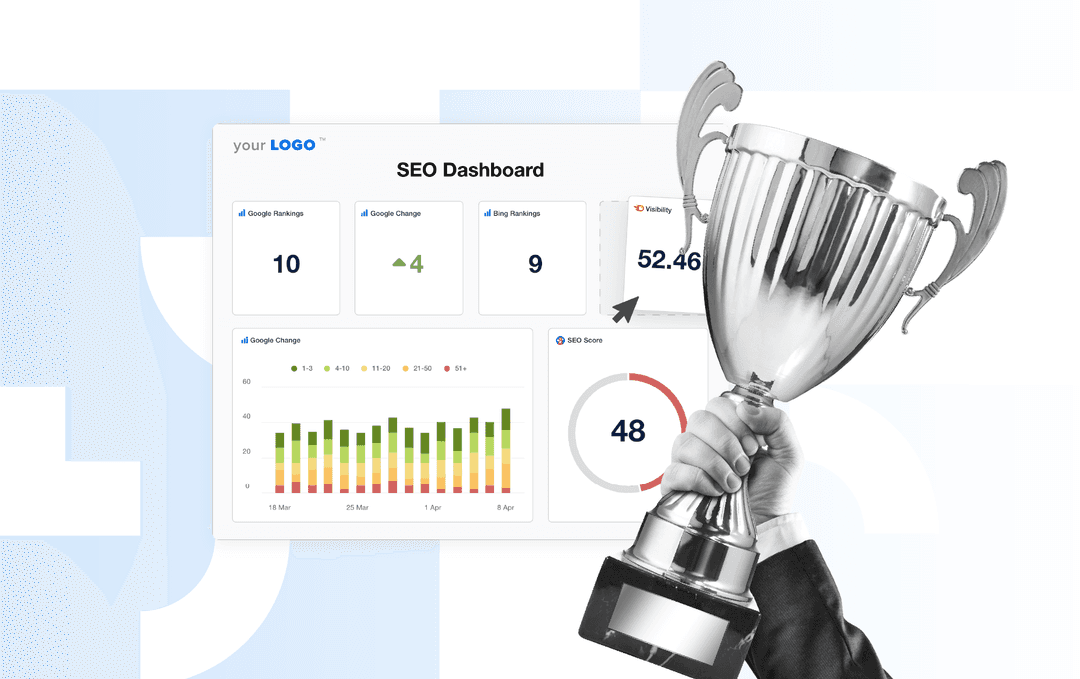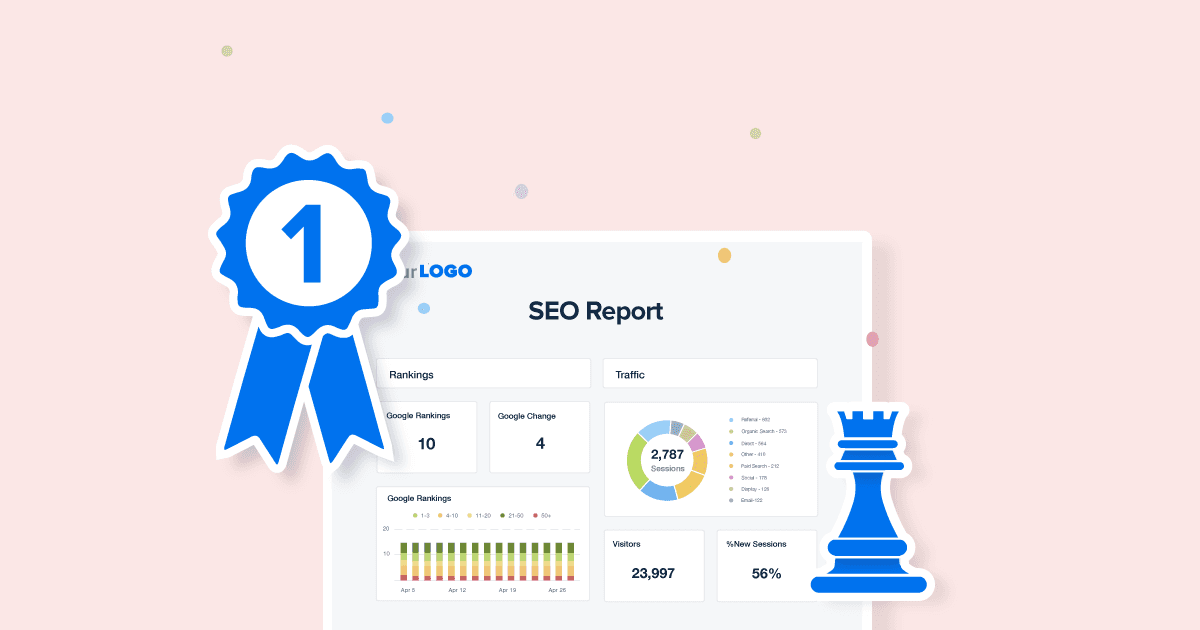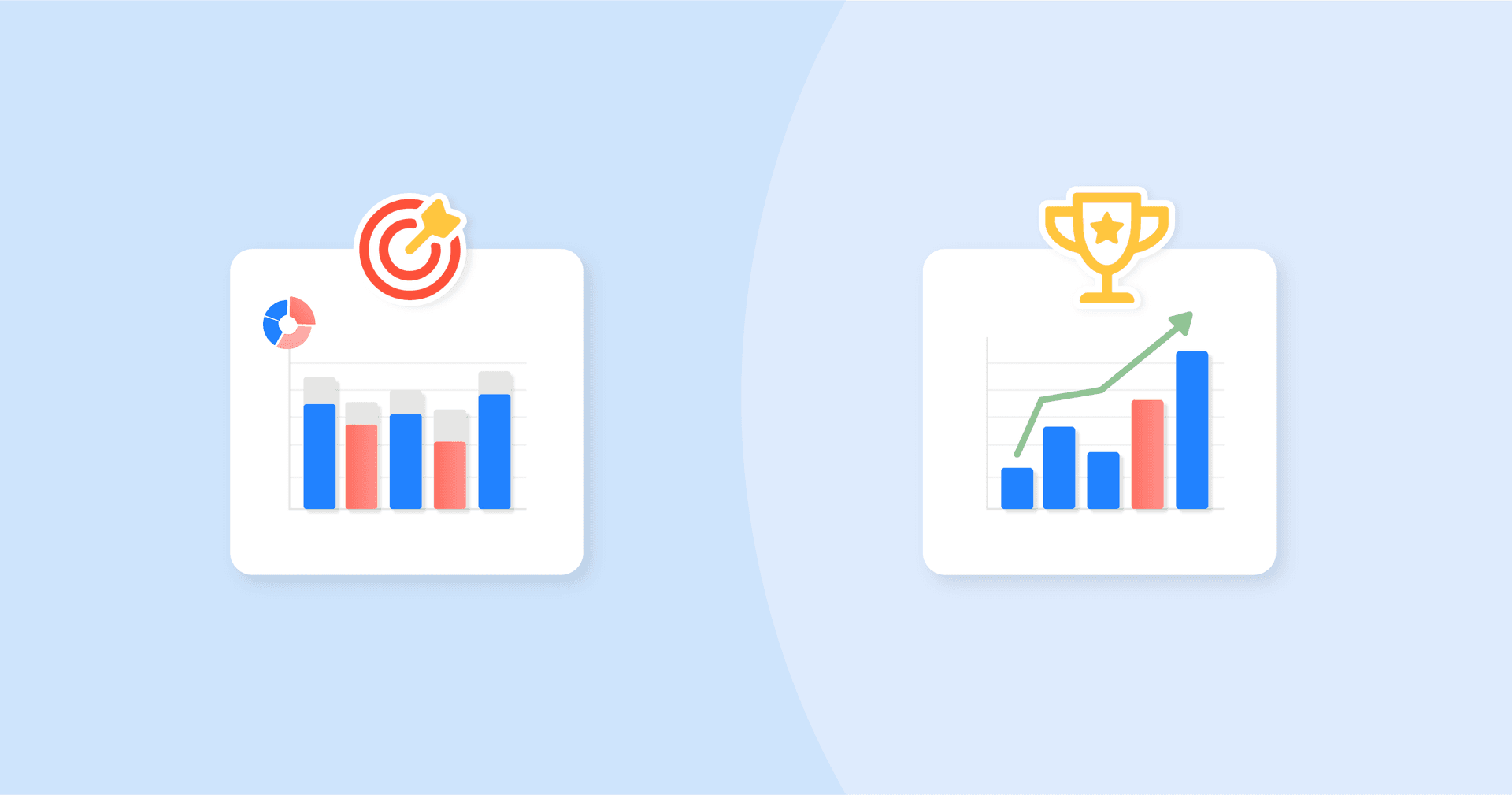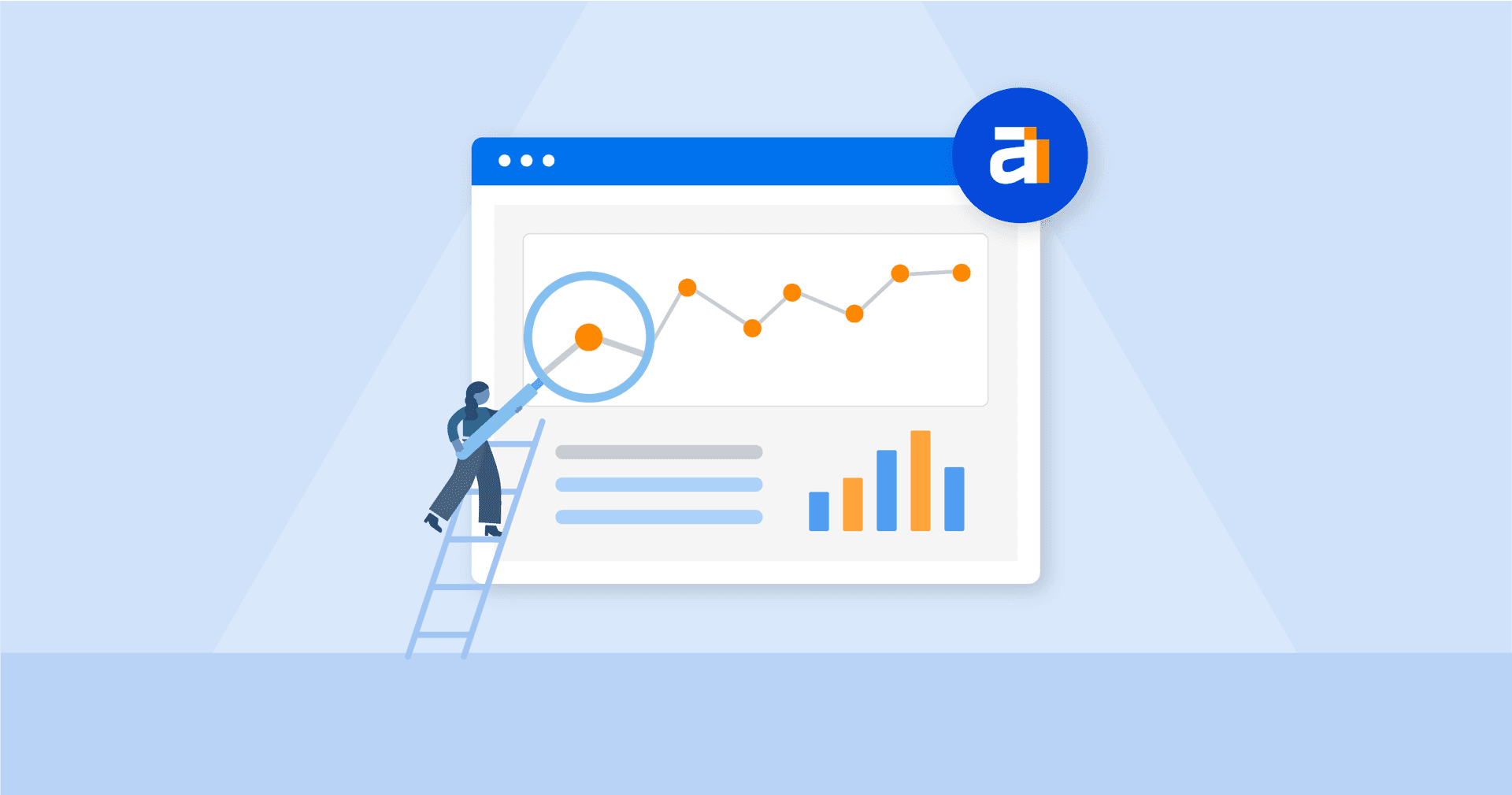Table of Contents
QUICK SUMMARY:
SEO OKRs push your clients further by setting ambitious objectives tied to business growth. In this guide, you’ll learn how to define goals that matter, track progress with KPIs, and use tools that connect organic traffic, keyword rankings, and backlinks to results your clients can’t help but notice.
The SEO game has dramatically changed in the last few years. With AI reshaping search results, user behavior shifting, and Google constantly tweaking what it values, it’s getting harder to win with the same old tactics.
Rankings and backlinks still matter—but they’re no longer the whole story. Agencies need to think bigger, and look at the full picture of what drives long-term visibility and impact.
This is where SEO Objectives and Key Results (OKRs) come into play. More than just goal-setting, OKRs help agencies align teams, focus resources, and track progress against outcomes that actually move the needle.
When thoughtfully structured, SEO OKRs enable agencies to prioritize what matters most: user experience, content authority, technical soundness, and measurable business results. They shift the focus from vanity metrics to performance that truly drives growth.
Today, we’re breaking down SEO OKRs—what they are, how to measure them, and the tools and examples to help you put them to work IRL.
What is an OKR in SEO?
OKR stands for Objectives and Key Results. It’s a goal-setting system built around two parts:
Objective = the big, ambitious goal you’re aiming for.
Key results = the specific, measurable steps that show whether you’re getting there.
OKRs aren’t about playing it safe. The whole point is to set goals that stretch a team further than a basic to-do list ever could. Let’s break down an example to see how it works.
Objective: Expand organic visibility to capture 300 new qualified leads this quarter.
Key result 1: Increase organic search traffic to product pages by 25%.
Key result 2: Rank in the top three for five targeted keywords with high buying intent.
Key result 3: Earn 20 backlinks from high authority websites in the industry.
Yes, these goals are a little extra—and that’s the idea. Giants like Google, Intel, and Amazon use them to push their teams further, even if 100% isn’t always realistic.
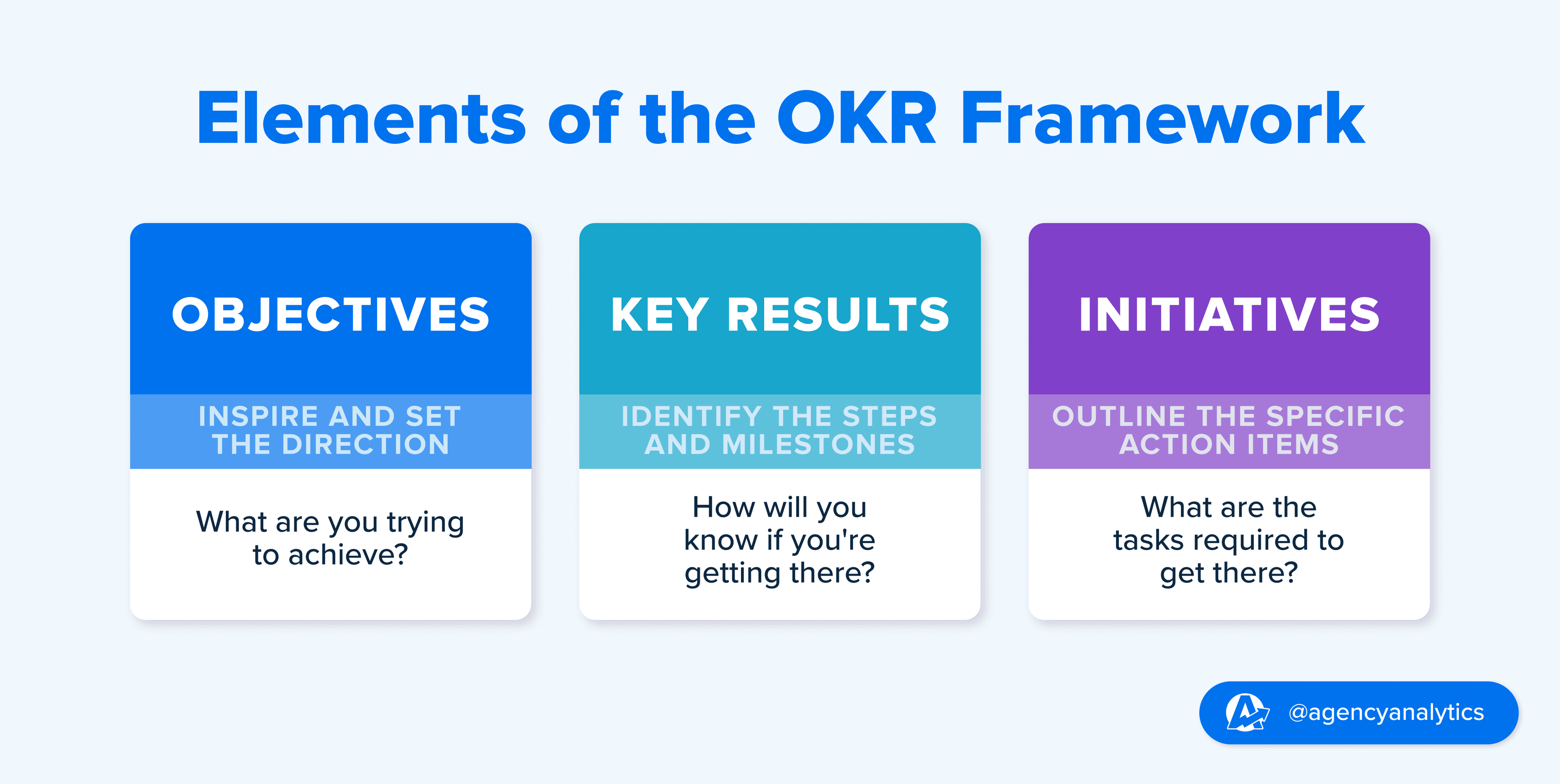
Agency tip: Use a goal-setting framework to turn broad SEO goals into specific objectives and measurable key results. It’s the difference between “let’s increase brand visibility” and “let’s increase visibility in a way that brings in 300 qualified leads this quarter.”
Should you tackle OKRs, metrics, or both?
The short answer? It depends. Think of your client’s SEO program like running a marathon.
The objective is the finish line—the big goal your client is chasing. Maybe it’s doubling organic revenue this quarter or acquiring new customers through search.
The key results are the mile splits you map out in advance. Think: boosting organic traffic to product pages by 25% or getting 100 new customer signups.
KPIs are the stats on the watch: pace, heart rate, hydration. In SEO terms, that would include specific website KPIs like keyword rankings, organic search traffic, or click-through rates. The live signals that let you adjust mid-race so you don’t discover too late that you’ve fallen behind.
So when do you use each? If a client wants to maintain performance or visibility, KPIs may be enough. If they want to sprint past their personal best—like owning the search results in their niche—OKRs are the framework that gets them there.
But here’s the reality for most agencies: you almost always need both. OKRs set the destination and smart KPIs keep you on pace. Leave one out and you’re either running blind or running in circles—neither of which gets across that finish line.
Agency tip: Drowning in metrics? AgencyAnalytics handles KPI reporting and tracking so your SEO OKRs actually make sense to clients. Start your free 14-day trial today.
How to define SEO OKRs that align with marketing and company goals
Now that we’ve (hopefully) cleared up the whole OKR vs KPI thing, let’s talk about how to determine the SEO OKRs that align with your client’s broader business goals. Here’s how to get started.
Define the objective
Every client says they want “more website traffic” or “better search visibility.” The question is: how does that connect to their broader business goals? An SEO objective sets the direction.
Think about a SaaS startup. Instead of chasing traffic for traffic’s sake, the objective might be to grow trial signups from organic search. For a local law firm, it could be capturing qualified leads from people searching in their city. While an ecommerce brand might set an objective to increase revenue by driving targeted traffic to product pages.
The objective doesn’t get into the weeds—that’s the next step. It’s about giving the marketing team a clear “why” behind their SEO efforts.
Choose only measurable SEO key results
This is where you move from vision to proof. Key results define what success looks like and give you benchmarks to track progress.
For example:
Rank top three for five targeted keywords with commercial intent.
Earn 15 high-quality backlinks from authoritative websites.
Increase average session duration on the top five landing pages by one minute.
Key results are what make SEO goals actionable. If you can’t measure it, it’s not a key result—it’s just wishful thinking.
Assign ownership and tools
A good rule of thumb: if everyone’s in charge of monitoring key results, nobody is. Each SEO objective needs a clear owner and the right tools to track progress. Here’s how your agency could break it down:
Dev: page load time and Core Web Vitals with PageSpeed Insights or Lighthouse.
Content: user engagement, internal links, long tail keywords in Google Search Console, and Google Analytics.
Outreach: link building, referral traffic, and backlink profile with Ahrefs or Semrush.
Social: social media engagement and referral traffic from posts using platform analytics or connected dashboards.
AgencyAnalytics pulls it all into one dashboard, keeping SEO work visible, measurable, and client-friendly—without the late-night “what’s the login?” emails. Get started for free today.
As an SEO consultant, accurate client reporting is essential to be able to evaluate how well various SEO strategies are working.
Kelly Fitzgerald, Founder, Savvy Marketing Services
6 top-down SEO OKR examples
Talking about OKRs in theory is fine, but the lightbulb moment happens when you map them to real client goals. Here are six SEO OKR examples that show what that looks like in practice.
Objective: Drive organic revenue
For most clients, revenue is the north star. Because well, that’s what keeps the lights on. Here’s how you might break that down into key results:
Key Result 1: Increase organic traffic to product pages by 25% this quarter.
Key Result 2: Improve conversion rates from organic sessions by 10%.
Key Result 3: Attribute $50,000 in new revenue to organic search traffic.
Objective: Boost organic conversions
Traffic is great, but conversions pay the bills. This OKR shifts the focus from visits to trial signups and form fills, to show how well your agency’s SEO work is generating leads.
Key Result 1: Double form-fill conversion rates on their main landing page from 2%-4%.
Key Result 2: Generate 500 additional trial signups from organic search this quarter.
Key Result 3: Rank in the top five for five high-intent keywords.
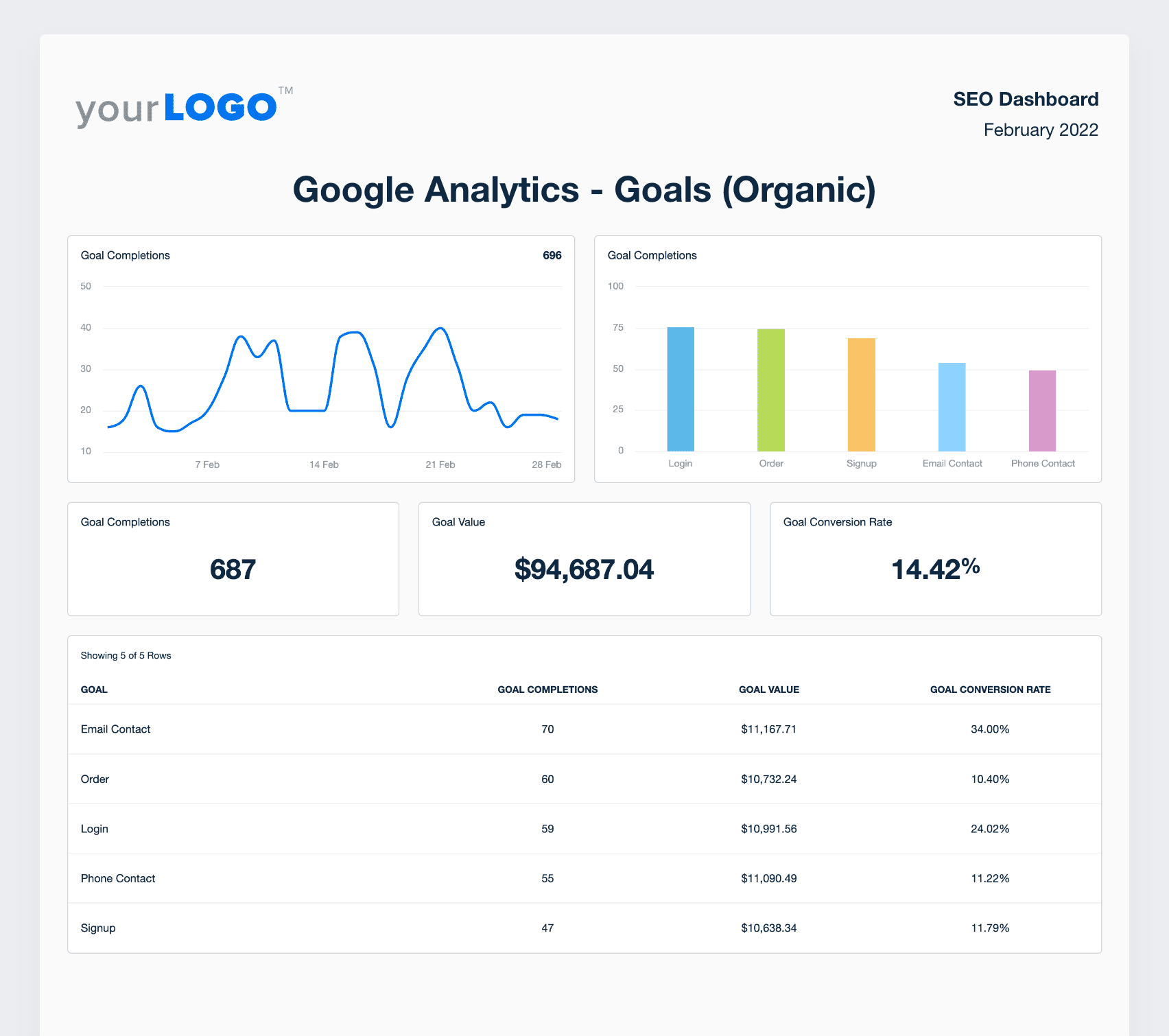
Track organic conversions to demonstrate the success of your SEO strategy! Build white labeled, custom reports and dashboards free for 14 days with AgencyAnalytics.
Objective: Increase targeted middle-of-funnel and bottom-of-funnel traffic
Not all traffic is created equal. This OKR zeroes in on the visitors most likely to become customers rather than window shoppers.
Key Result 1: Publish 10 new pieces of relevant content aimed at commercial-intent and comparison queries.
Key Result 2: Rank in the top five for three specific keyword searches with buying intent.
Key Result 3: Drive 2,000 additional visits to product and service pages this quarter.
Objective: Drive increased commercial and buying intent keyword rankings
Ranking for “what is” terms is fine, but this OKR is about showing up when someone’s ready to book, buy, or sign.
Key Result 1: Move 10 high-intent keywords into the top three results.
Key Result 2: Capture three featured snippets tied to related queries.
Key Result 3: Outrank two competitors for branded terms.
Objective: Increase engagement and time-on-page
Getting the click is step one. Keeping people engaged is step two. This OKR makes sure the content holds attention long enough to convert.
Key Result 1: Raise average session duration from 1:30 to 2:30 minutes.
Key Result 2: Reduce bounce rate on the top five landing pages by 15%.
Key Result 3: Add 20 new internal links to guide readers into related content.
Objective: Earn topically relevant backlinks
Anyone can chase backlinks. This OKR keeps the focus on authoritative, relevant ones that actually improve search visibility and credibility.
Key Result 1: Secure 20 backlinks from authoritative healthcare and wellness sites.
Key Result 2: Conduct outreach to 50 high-value domains.
Key Result 3: Increase referring domains by 15%.
Agency tip: Worried adding OKRs to your team’s plate will be one task too many? That’s exactly what data dashboards are made for—pulling goals, progress, and results into one clear view so your team stays focused, not frazzled. Create a custom SEO dashboard today with your free 14-day trial from AgencyAnalytics!
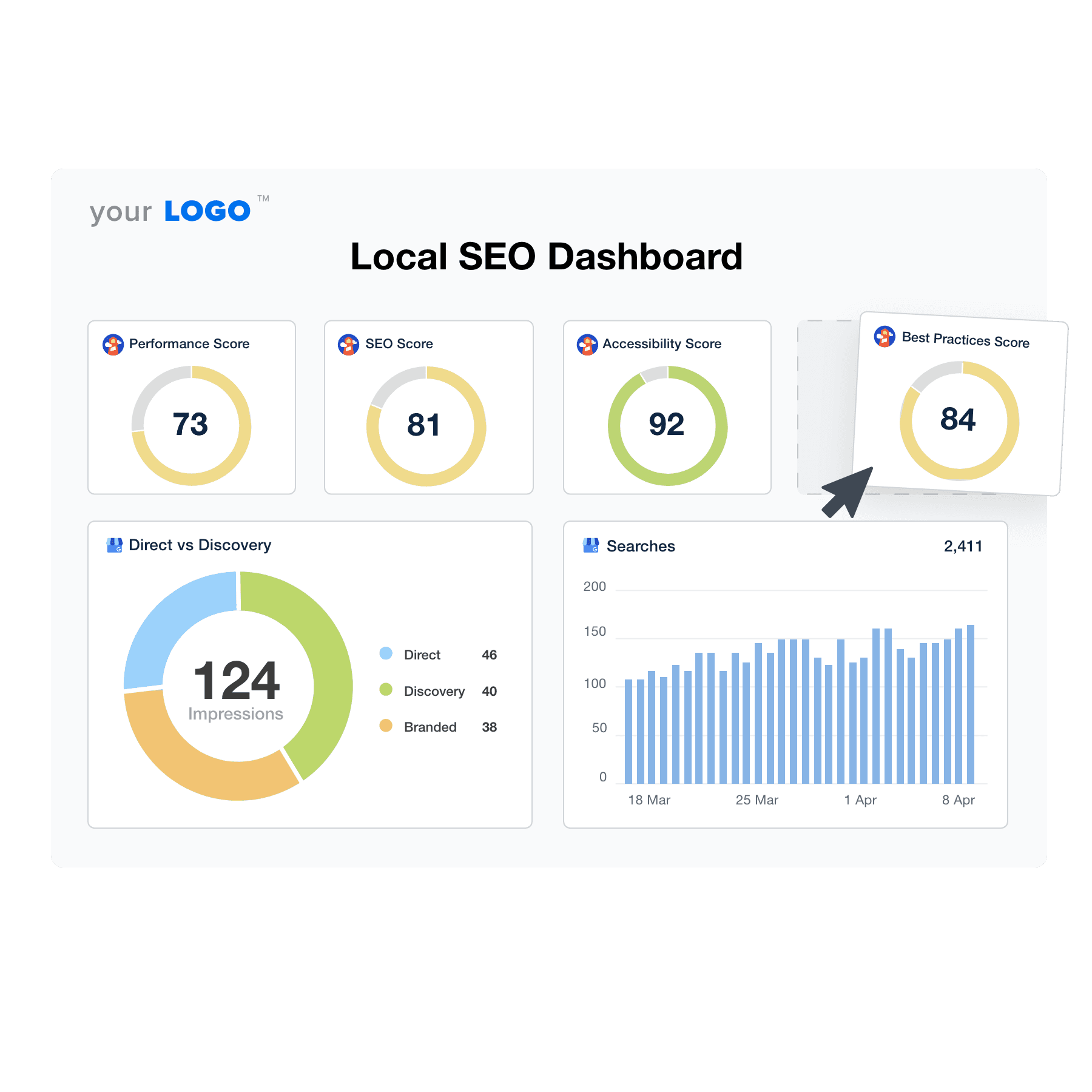
Common mistakes to avoid when assigning SEO OKRs
Even the best OKR framework will flop if it’s written the wrong way. Here are a few agency-tested slip-ups to avoid when turning SEO strategies into measurable key results.
Setting vague objectives
“Improve SEO performance” sounds fine in a kickoff call, but it won’t get you far. Objectives should tie directly to overarching business objectives like revenue or qualified leads. If you can’t explain to a client how the SEO objective connects to their marketing goals, it’s too fuzzy.
Piling on too many key results
Trying to track seven different goals at once usually means accomplishing none of them. Keep it to three or four measurable key results so your marketing team has focus and clients have clarity.
AgencyAnalytics offers reports that are simple to understand. A client with zero SEO knowledge can still see how the work we have done has helped benefit their website. Clients can also have their own access to reporting which means they can see how they are ranking at any time.
Guy Hudson, Founder, Bespoke Marketing Plans
Ignoring cross-team collaboration
SEO touches everything: content, dev, design, and even social. If an OKR requires faster page load time but the dev team isn’t looped in, it’s going to stall. Ownership should be clear across departments, or progress will get stuck in limbo.
Chasing vanity metrics
It’s tempting to highlight easy wins like “more impressions” or “higher average position.” The real question: do those wins drive revenue, signups, or qualified leads? Marketing metrics should prove ROI, not pad reports with vanity numbers.
Agency tip: Want to avoid these slip-ups? Use our KPI reporting examples as a template—clear goals, measurable results, and zero fuzzy objectives.
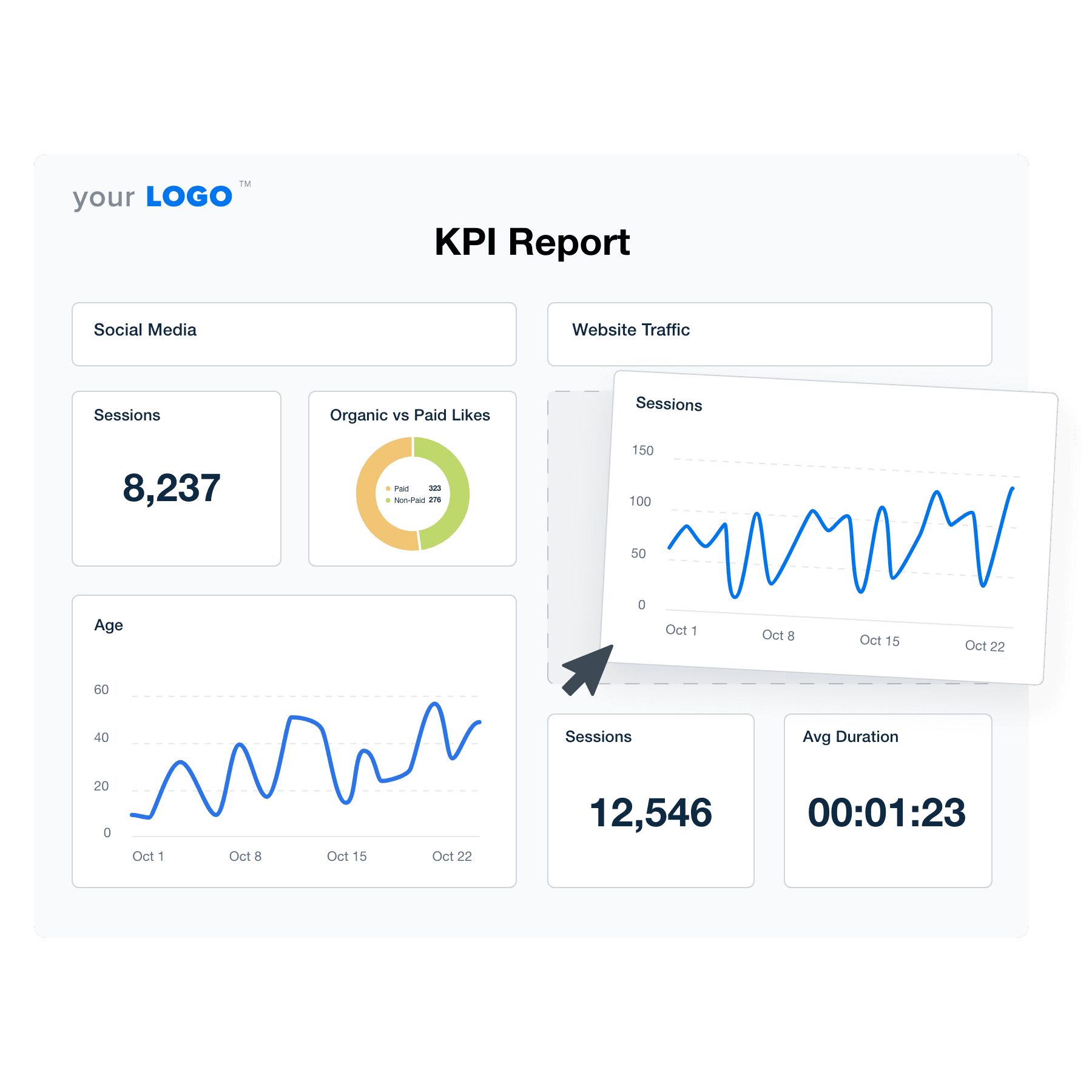
Drag and drop the widgets relevant to your client campaign into an easy-to-read KPI report! It’s free for 14 days with AgencyAnalytics.
Overlooking existing content
Sometimes the biggest wins come from updating what’s already there—refreshing relevant content, fixing broken links, adding internal links, and optimizing for long tail keywords or voice search. It’s not as flashy as a new campaign, but skipping this low-hanging fruit means leaving quick wins on the table.
Tools to track and measure SEO OKR achievements
Setting SEO OKRs is one thing. Proving you’ve actually hit them? That’s the grind.
Most teams juggle Google Search Console, Ahrefs, Semrush, and PageSpeed Insights just to stay on top of search engine rankings, backlinks, and Core Web Vitals. Do you need those metrics to track SEO OKRs? Of course. But hopping between platforms every time you check on a client’s SEO objective isn’t exactly a good use of billable hours.
AgencyAnalytics pulls all your SEO metrics into one platform, allowing you to:
Track search engine rankings, conversions, and website traffic without bouncing between tabs.
Show the impact of link building with live backlink data and referring domains.
Automate SEO reporting with pre-built templates, so your lunch break doesn’t turn into another bad date with Excel.
Pull everything into one place with 80+ integrations, including Google Analytics, Search Console, Ahrefs, Semrush, and Moz.
Connect metrics to marketing OKRs in custom dashboards that tie SEO work directly to client business goals.
Think of it as hitting pause on the tab-hopping chaos and pressing play on an SEO strategy that has your clients bragging about you in their next board meeting.
Final thoughts
SEO teams live and breathe metrics. Clients? Not so much. They don’t want the play-by-play. They want proof that the SEO OKRs you set together are actually being met. That’s why goal-based reporting matters—and it’s what AgencyAnalytics does best.
One platform, all the metrics, none of the reporting runaround—start your free trial today.

Written by
Kali Armstrong is a freelance content writer with nearly a decade of experience crafting engaging, results-driven copy. From SEO blogs to punchy short-form pieces, she combines strategic insight with authentic messaging to captivate audiences and drive results.
Read more posts by Kali ArmstrongSee how 7,000+ marketing agencies help clients win
Free 14-day trial. No credit card required.



